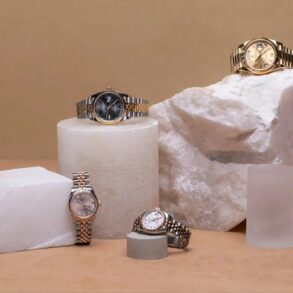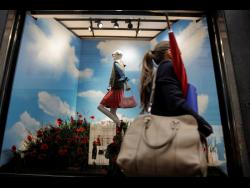In the world of luxury fashion, brands like Louis Vuitton Moët Hennessy (LVMH), Armani, and others are synonymous with opulence, exclusivity, and high price tags. These brands cater to a clientele that pays a premium for what they perceive as a superior quality and status symbol. However, beneath the glamorous facade lies a troubling reality: the exploitation of low paid workers who toil under harsh conditions to produce these high-end handbags at a shockingly cheap price.
A recent exposé by the Italian police, which uncovered workshops employing Chinese workers under exploitative conditions, has sent shockwaves through the global fashion industry. This revelation casts a harsh light on the darker side of luxury fashion, highlighting the human cost behind the opulent facades of high-end brands.
Over the past few months, Milan prosecutors have been investigating Dior, an LVMH company, regarding its use of third-party suppliers. A Reuters report said that these companies exploited workers who were producing bags for a very small fraction of their retail price.
According to documents investigated by police, Christian Dior paid a supplier merely $57 to produce bags worth around $2,780. These expenses exclude raw materials like leather. The prosecution alleged that Dior failed to take “appropriate measures to check the actual working conditions or the technical capabilities of the contracting companies.”
On this, Fabio Roia, president of Milan’s court system said, “Why does it cost so little to manufacture the product? The brands need to ask themselves this question.”
The conditions in these workshops were appalling, with workers enduring long hours, inadequate pay, and unsafe working environments. Many of these workers were undocumented Chinese migrants, further exacerbating their vulnerability to exploitation.
Workshops operating 24×7, workers living in deplorable conditions
The investigations carried out in March and April this year on the suppliers the suppliers, named Pelletteria Elisabetta Yang SRL, New Leather Italy SRLS, AZ Operations SRLS, and Davide Albertario Milano SRL, revealed that workers were sleeping at the production plant to meet round-the-clock manufacturing requirements. Data on electricity consumption further showed that work was getting done at night and even on holidays.
Moreover, the subcontractors in question were Chinese-owned businesses, with the majority of employees coming from China. The inquiry discovered that two workers were illegal immigrants, while seven others lacked the necessary documents. What is even more shocking is that safety devices on machines were removed to expedite manufacturing.
The court document said that the staff was working “in hygiene and health conditions that are below the minimum required by an ethical approach.”
The Italian authorities also probed Giorgio Armani’s contractors. Armani was also accused of failing to adequately manage its suppliers. The investigation revealed that Armani paid contractors $99 per bag for goods that retail for more than $1,900 in stores.
In reaction to these revelations, Milan judges put Dior and Armani units under judicial administration for one year which implies they will be closely scrutinised yet permitted to continue operations meanwhile.
The prosecution underlined that such labour violations are a common practice in the luxury fashion sector, employed to drive up profits. Court records referred to these acts as a “generalised and consolidated manufacturing method.”
“Made in Italy” label being used as a deception?
The “Made in Italy” label is a hallmark of quality and craftsmanship, used extensively by luxury brands to justify their high prices. However, the exposé reveals a starkly different reality. By employing Chinese workers in Italian workshops, these brands can legally use the “Made in Italy” label, despite the fact that the actual labour conditions resemble those found in sweatshops rather than artisanal ateliers. However, the practice adopted by Dior and Armani undermines the authenticity and integrity of the label, deceiving consumers who believe they are purchasing products made under fair and high-quality conditions.
Most importantly, luxury brands like Dior and Armani enjoy significant cost advantages by outsourcing production to workshops that employ cheap labour. By paying workers minimal wages and providing poor working conditions, these brands significantly reduce their production costs. This cost-saving allows them to maintain high-profit margins while keeping prices competitive. In contrast, law-abiding companies that adhere to fair labour practices and pay decent wages face higher production costs, making it difficult for them to compete on price.
This concern was also raised by Fabio Roia, the president of the Milan Court who said, “The main problem is obviously people being mistreated: applying labour laws, so health and safety, hours, pay. But there is also another huge problem: the unfair competition that pushes law-abiding firms off the market.”
Notably, Smaller and emerging brands, in particular, bear the brunt of this unfair competition. Lacking the financial clout of established luxury brands, these companies often struggle to compete on price while maintaining ethical standards. The exploitation of cheap labour by larger brands creates an uneven playing field, where smaller, ethical brands find it challenging to survive and thrive. This not only stifles innovation but also limits consumer choice by driving ethical companies out of the market.
Workers exploitation in big brands has been found before
This, however, is not the first time that workers’ exploitation in major luxury brands has been exposed. In May, a Public Eye investigation revealed that fast-fashion retailer Shein was having its suppliers work 75-hour workweeks with low compensation violating Chinese labour rules, despite the company’s commitment to discontinue the practice in 2021. The workers also turned out to be working in warehouses with fire risks. In China, it was reported in 2020 that 83 foreign and Chinese companies benefitted from the assignment of nearly 80,000 Uyghur workers to their factories under abusive labour transfer programs.
In the year 2021, Uniqlo and Zara owner Inditex came under a French investigation over forced labour abuses linked to China’s Uyghurs. Even Swedish brand H&M allegedly used similar methods in Myanmar, prompting an investigation and eventually forcing the company to close its business there.
Moreover, popular brands like Gucci, Gap, Inc., Adidas, Prada, Zara, Puma, and Fendi among others have in the past been accused of labour exploitation. A 2020 report by NYT said that major luxury brands including Dior, and Saint Laurent use Indian embroiderers for their products and pay them very small wages for the same while making huge profits out of these products.
This, however, is not limited to major fashion and footwear brands but transcends to popular tech companies, the toy industry, automotive industry among others. Back in 2011, similar allegations were made against Apple, through its supplier Foxconn in China’s Shenzhen. It was reported that seven Chinese workers at Foxconn committed suicide over deplorable working conditions. Even HP, Samsung, and Microsoft have faced worker exploitation allegations. Similarly, in the automotive industry, major companies like Volkswagen, and BMW among others have been accused of using slave labour in countries like Brazil etc.
Notably, countries like China, India, Bangladesh and Vietnam among others offer a vast pool of labour willing to work for low wages due to economic necessity. For large fashion brands, this presents an opportunity to reduce production costs significantly. By outsourcing manufacturing to regions where labour is inexpensive, brands maintain high-profit margins while selling their products at premium prices. This practice, driven by the desire to minimize costs and maximize profits, however, raises serious ethical concerns and exposes the hidden human cost of fashion.
The use of cheap labour is often hidden from consumers, who are enticed by the allure of luxury and craftsmanship. Labels like “Made in Italy” or “Made in France” evoke images of skilled artisans working in pristine ateliers, yet the reality may involve exploited workers toiling in substandard conditions, as revealed in the latest case of Dior and Armani. This deception undermines consumer trust and calls into question the authenticity and value of luxury products.
Brands must commit to greater transparency in their supply chains, ensuring that all workers are treated fairly and ethically. Moreover, consumers should also stop blindly running behind big brands for the sake of flaunting their wealth. People’s character should be their ’status symbol’ not essentially the handbags they carry, the clothes and shoes they wear. The true cost of fashion should be measured not just in dollars, but in the dignity and well-being of the people who bring these products to life.
This post was originally published on this site be sure to check out more of their content.




